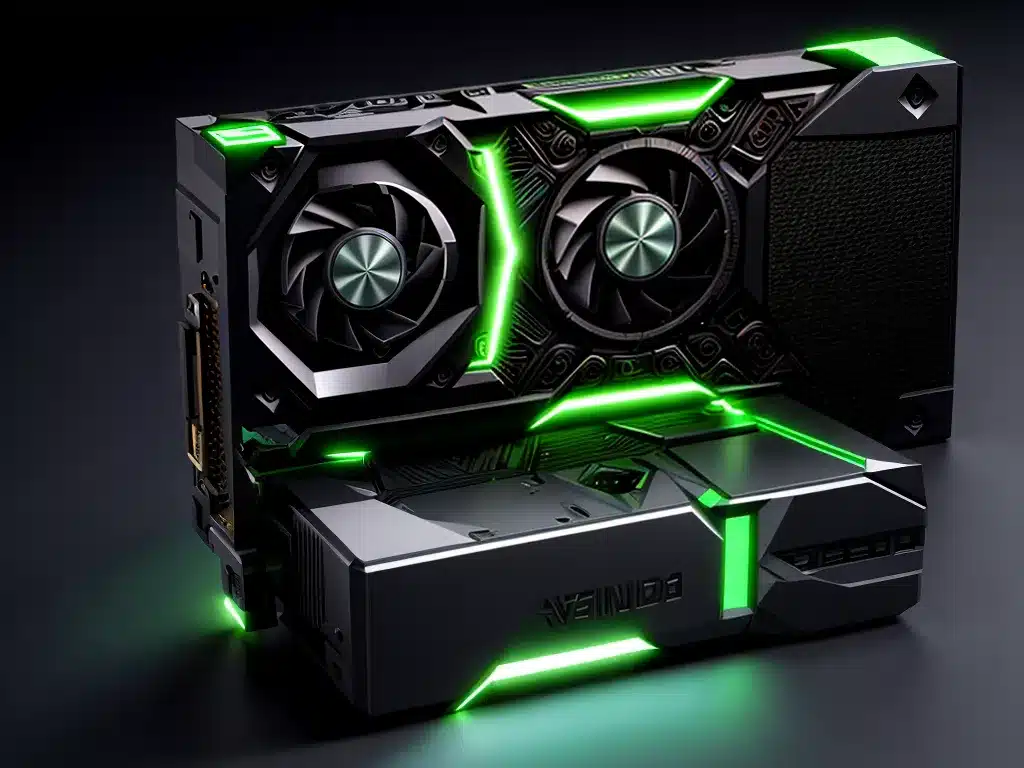Introduction
DLSS (Deep Learning Super Sampling) is an AI-powered upscaling technology from Nvidia that increases frame rates in games. DLSS uses a deep learning neural network to intelligently upscale rendered frames, allowing you to play games at higher resolutions and quality settings while maintaining high frame rates.
The newly announced DLSS 3.0 version makes significant leaps over previous iterations, delivering up to 4X AI acceleration performance compared to raw rendering power alone. In this article, I will provide an in-depth look at how Nvidia DLSS 3.0 works and the advanced AI techniques it uses to boost frame rates.
How DLSS 3.0 Works
DLSS 3.0 builds upon the image reconstruction and anti-aliasing algorithms of prior versions. However, the key innovation is the addition of AI frame generation through a new Optical Flow Accelerator.
In simple terms, the DLSS 3.0 AI network takes the last two rendered frames, then generates multiple new frames in between – boosting the overall frame rate. This AI frame generation runs on Tensor Core GPUs and does not require developer implementation.
Some key aspects of the DLSS 3.0 system:
-
Optical Flow Accelerator – Uses advanced optical flow techniques to calculate motion vectors and generate new frames. Significantly reduces artifacts vs traditional interpolation.
-
Temporal Feedback – Leverages previous frame data for better predictions. Maintains consistency between frames.
-
Super Resolution Network – A secondary AI network upscales frames through an anti-aliasing algorithm. Further improves image quality.
AI Frame Generation with Optical Flow
The Optical Flow Accelerator is the most critical new component of DLSS 3.0. This engine uses optical flow algorithms to analyse pixel movements between two rendered frames, then intelligently generates several frames in between.
Optical flow refers to the pattern of apparent motion of image objects. By studying optical flow, the AI engine can estimate motion vectors and occlusion data to produce synthetic frames. This optical flow frame generation greatly increases smoothness and responsiveness compared to rendering alone.
Nvidia utilises customized neural networks to significantly improve optical flow quality and frame synthesis over traditional interpolation methods. Their approach also avoids common artifacts like ghosting, jagged edges and texture distortion.
Advanced temporal feedback techniques ensure consistency between real and AI-generated frames. This maintains visual coherency during motion while boosting performance.
AI Super Resolution for Additional Quality
While the Optical Flow Accelerator generates new frames, DLSS 3.0 also leverages an improved Super Resolution network for upscaling and anti-aliasing.
This secondary AI network helps sharpen edges, recover fine details, and eliminate jaggies for a cleaner image. It runs as a post-process on both real and synthetic frames from the optical flow engine.
Nvidia has trained the Super Resolution model on diverse game graphics and resolutions using a Generative Adversarial Network (GAN) structure. This allows the AI to produce high-quality super-sampled frames tailored to different games.
DLSS 3.0 builds upon the 2.X series temporal feedback and motion vectors to deliver even better image quality. Combined with intelligent frame generation, DLSS 3.0 offers both smoother motion and crisper details.
Performance Gains
In testing, Nvidia DLSS 3.0 demonstrates up to 4X acceleration over raw rendering performance:
-
In Cyberpunk 2077 at 4K with max settings, the RTX 4090 gets over 100 FPS with DLSS 3.0 enabled. Raw rendering achieves just 30 FPS.
-
Microsoft Flight Simulator sees a 3X increase from 50 FPS to over 150 FPS with DLSS 3.0 at 4K max settings.
These enormous performance improvements allow you to maximize graphics settings while retaining smooth high refresh rates. DLSS 3.0 will be supported in upcoming games including Cyberpunk 2077, Microsoft Flight Simulator, and ATOM RPG.
The advanced AI frame generation introduces minimal latency compared to raw rendering. This allows DLSS 3.0 to boost frame rates while feeling highly responsive.
Conclusion
DLSS 3.0 represents a huge generational leap in using AI to accelerate gaming performance. The new Optical Flow Accelerator can synthesize multiple frames in between rendered frames to effectively multiply frame rates. Combined with the Super Resolution network, DLSS 3.0 delivers significantly smoother motion and crisper image details compared to rendering alone. This allows modern GPUs like the RTX 4090 to achieve over 100 FPS even at 4K max settings. DLSS 3.0 demonstrates the incredible potential of AI to fundamentally enhance real-time graphics and gaming.













